- Home
- Neal Stephenson
Mother Earth Mother Board Page 4
Mother Earth Mother Board Read online
Page 4
In which the Hacker Tourist returns (temporarily) to British soil in the Far East. The (temporary) center of the cable-laying universe. Hoisting flagons with the élite cable-laying fraternity
at a waterfront establishment. Classic reprise of the ancient hacker-versus-suit drama.Historical exploits of the famous William Thomson and the infamous Wildman Whitehouse. Their rivalry, culminating in the destruction of the first transatlantic cable. Whitehouse disgraced, Thomson transmogrified into Lord Kelvin ....
22° 15.745' N, 114° 0.557' ESilvermine Bay, Lan Tao Island,?b> Hong Kong
"Today, Lan Tao Island is the center of the cable-laying universe," says David M. Handley, a 52-year-old Southerner who, like virtually all cable-laying people, is talkative, endlessly energetic, and gives every indication of knowing exactly what he's doing. "Tomorrow, it'll be someplace else." We are chug-a-lugging large bottles of water on a public beach at Tong Fuk on the southern coast of Lan Tao, which is a relatively large (25 kilometers long) island an hour's ferry ride west of Hong Kong Island. Arrayed before us on the bay is a collection of vessels that, to a layman, wouldn't look like the center of a decent salvage yard, to say nothing of the cable-laying universe. But remember that "layman" is just a polite word for "idiot."
Closest to shore, there are a couple of junks and sampans. Mind you, these are not picturesque James Clavell junks with red sails or Pearl Buck sampans with pole-wielding peasants in conical hats. The terms are now used to describe modern, motorized vessels built vaguely along the same lines to perform roughly the same functions: a junk is a large, square-assed vessel, and a sampan is a small utility craft with an enclosed cabin. Farther out, there are two barges: slabs with cranes and boxy things on them. Finally, there are several of what Handley calls LBRBs (Little Bitty Rubber Boats) going back and forth between these vessels and the beach. Boeing hydrofoils and turbo cats scream back and forth a few miles out, ferrying passengers among various destinations around the Pearl Delta region. It's a hot day, and kids are swimming on the public beach, prudently staying within the line of red buoys marking the antishark net. Handley remarks, offhandedly, that five people have been eaten so far this year. A bulletin board, in English and Chinese, offers advice: "If schooling fish start to congregate in unusually large numbers, leave the water."
This bay is the center of the cable-laying universe because cable layers have congregated here in unusually large numbers and because of those two barges, which are a damn sight more complicated and expensive than you would ever guess from looking at them. These men (they are all men) and equipment have come from all over the world, to land not only FLAG but also, at the same time, another of those third-generation fiber-optic cables, APCN (Asia-Pacific Cable Network).
In contrast to other places we visited, virtually no local labor is being used on Lan Tao. There is hardly a Chinese face to be seen around the work site, and when you do see an Asian it tends to be either an Indonesian member of a barge crew or a Singaporean of Chinese or Indian ancestry. Most of the people here are blue-eyed and sunburned. A good half of them have accents that originate from the British Isles. The remainder are from the States (frequently Dixie), Australia, or New Zealand, with a smattering from France and Germany.
Both FLAG and APCN are just passing through Hong Kong, not terminating here, and so each has to be landed twice (one segment coming in and one segment going back out). In FLAG's case, one segment goes south to Songkhla, Thailand, and the other goes north toward Shanghai and Korea. It wouldn't be safe to land both segments in the same place, so there are two separate landing sites, with FLAG and APCN cables running side by side at each one. One of the sites is at the public beach, which is nice and sandy. The other site is a few hundred meters away on a cobble beach - a hill of rounded stones, fist- to football-sized, rising up out of the surf and making musical clinking noises as the waves smash them up and down the grade. This is a terrible place to land a cable (Handley: "If it was easy, everybody would do it!") but, as in Thailand, diversity is the ultimate trump card. Planted above the hill of cobbles is a brand-new cable station bearing the Hong Kong Telecom logo, only one of the spoils soon to be reaped by the People's Republic of China when all this reverts to its control next year.
Lan Tao Island, like most other places where cables are landed, is a peculiar area, long home to smugglers and pirates. Some 30,000 people live here, mostly concentrated around Silvermine Bay on the island's eastern end, where the ferries come in every hour or so from Hong Kong's central district, carrying both islanders and tourists. The beaches are lovely, except for the sharks, and the interior of the island is mostly unspoiled parkland, popular among hikers. Hong Kong's new airport is being built on reclaimed land attached to the north side of the island, and a monumental chain of bridges and tunnels is being constructed to connect it with the city. Other than tourist attractions, the island hosts a few oddities such as a prison, a Trappist monastery, a village on stilts, and the world's largest outdoor bronze Buddha.
Cable trash, as these characters affectionately call themselves, shuttle back and forth between Tong Fuk and Silvermine Bay. They all stay at the same hotel and tend to spend their off hours at Papa Doc's (no relation to the Haitian dictator), a beachfront bar run by expats (British) for expats (Australians, Americans, Brits, you name it). Papa Doc's isn't just for cable layers. It also meets the exacting specifications of exhausted hacker tourists. It's the kind of joint that Humphrey Bogart would be running if he had washed ashore on Lan Tao in the mid-1990s wearing a nose ring instead of landing in Casablanca in the 1940s wearing a fedora.
One evening, after Handley and I had been buying each other drinks at Papa Doc's for a while, he raised his glass and said, "To good times and great cable laying!" This toast, while no doubt uttered with a certain amount of irony, speaks volumes about cable professionals.
For most of them, good times and great cable laying are one and the same. They make their living doing the kind of work that automatically weeds out losers. Handley, for example, was a founding member of SEAL Team 2 who spent 59 months fighting in Vietnam, laid cables for the Navy for a few more years, and has done similar work in the civilian world ever since. In addition to being an expert diver, he has a master mariner's license good up to 1,500 tons, which is not an easy thing to get or maintain. He does all his work on a laptop (he claims that it replaced 14 employees) and is as computer-literate as anyone I've known who isn't a coder.
Handley is unusual in combining all of these qualities into one person (that's why he's the boss of the Lan Tao Island operation), but the qualities are as common as tattoos and Tevas around the tables of Papa Doc's. The crews of the cable barges tend to be jacks-of-all-trades: ship's masters who also know how to dive using various types of breathing rigs or who can slam out a report on their laptops, embed a few digital images in it, and email it to the other side of the world over a satellite phone, then pick up a welding torch and go to work on the barge. If these people didn't know what they were doing, there's a good chance they would be dead by now or would have screwed up a cable lay somewhere and washed out of the industry.
Most of the ones here work on what amounts to a freelance basis, either on their own or as part of small firms. Handley, for example, is Director of Technical Services for the ITR Corporation, which, among other functions, serves as a sort of talent agency for cable-layers, matching supply of expertise to demand and facilitating contracts. Most of the divers are freelancers, hired temporarily by companies that likewise move from one job to another. The business is as close to being a pure meritocracy as anything ever gets in the real world, and it's only because these guys know they are good that they have the confidence to call themselves cable trash.
It was not always thus. Until very recently, cable-laying talent was monopolized by the clubs. This worked just fine when every cable was a club cable, created by monopolies for monopolies. In the last couple of years, however, two changes have occurred at once: FLAG, the first major priv
ately financed cable, came along; and at the same time, many experienced cable layers began to go into business for themselves, either because of voluntary retirement or downsizing. There clearly is a synergy between these two trends.
The roster of FLAG's Tong Fuk cable lay contains around 44 people, half of whom are crew members on either the cable barge Elbe or the accompanying tug Ocean East. The rest of them are here representing various contractors involved in the project. It would be safe to assume that at least that many are working on the APCN side for a grand total of around 100.
The size of the fraternity of cable layers is estimated by Handley to be less than 500, and the number is not increasing. A majority work full time for one of the clubs. Perhaps a couple of hundred of them are freelancers, though this fraction gives every indication of rising as the club employees resign and go to work as contractors, frequently doing the same work for the same company. "No one can afford to hire these folks for long periods of time," Handley says. But their pay is not exceptionally high: benefits, per diem, and expenses plus a daily rate - but a day might be anything from 0 to 24 hours of work. For a diver the rate might be $200 per day; for the master of a barge, tug, or beach $300; and for the experts running the show and repping for contractors or customers it's in the range of $300 to $400.
The arrival of a shore-landing operation at a place like Lan Tao Island must look something like this to the locals: suddenly, it is difficult to obtain hotel rooms because a plethora of small, unheard-of offshore corporations have blocked out a couple of dozen rooms for a couple hundred nights. Sunburned Anglos begin to arrive, wearing T-shirts and carrying luggage emblazoned with the logos of Alcatel, AT&T, or Cable & Wireless. They fly in from all points of the compass, speaking in Southern drawls or Australian twangs or Scottish burrs and sometimes bringing their wives or girlfriends, not infrequently Thai or Filipina. The least important of them has a laptop and a cell phone, but most have more advanced stuff like portable printers, GPS units, and that ultimate personal communications device, the satellite telephone, which works anywhere on the planet, even in the middle of the ocean, by beaming the call straight up to a satellite.
Sample conversation at Papa Doc's:
Envious hacker tourist: "How much does one of those satellite phones cost, anyway?"
Leathery, veteran cable layer: "Who gives a shit?"
Within a day or two, the cable layers have established an official haunt: preferably a place equipped with a dartboard and a few other amenities very close to the waterfront so they can keep an eye on incoming traffic. There they can get a bite to eat or a drink and pay for it on the spot so that when their satellite phones ring or when a tugboat chugs into the bay, they can immediately dash off to work. These men work and play at completely erratic and unpredictable hours. They wear shorts and sandals and T-shirts and frequently sport tattoos and hence could easily be mistaken, at a glance, for vacationing sailors. But if you can get someone to turn down the volume on the jukebox, you can overhear them learnedly discoursing on flaw propagation in the crystalline structure of boron silicate glass or on seasonal variation of currents in the Pearl River estuary, or on what a pain in the ass it is to helm a large ship through the Suez Canal. Their conversation is filled with references to places like Tunisia, Diego Garcia, the North Sea, Porthcurno, and Penang.
One day a barge appears off the cove, and there is a lot of fussing around with floats, lots of divers in the water. A backhoe digs a trench in the cobble beach. A long skinny black thing is wrestled ashore. Working almost naked in the tropical heat, the men bolt segmented pipes around it and then bury it. It is never again to be seen by human eyes. Suddenly, all of these men pay their bills and vanish. Not long afterward, the phone service gets a hell of a lot better.
On land, the tools of cable laying are the tools of civil engineers: backhoes, shovels, cranes. The job is a matter of digging a ditch, laying duct, planting manholes. The complications are sometimes geographical but mostly political. In deep water, where the majority of FLAG is located, the work is done by cable ships and has more in common with space exploration than with any terrestrial activity. These two realms could hardly be more different, and yet the transition between them - the shore landing - is completely distinct from both.
Shallow water is the most perilous part of a cable's route. Extra precautions must be taken in the transition from deep water to the beach, and these precautions get more extreme as the water gets more shallow. Between 1,000 and 3,000 meters, the cable has a single layer of armor wires (steel rods about as thick as a pencil) around it. In less than 1,000 meters of water, it has a second layer of armor around the first. In the final approach to the shoreline, this double-armored cable is contained within a massive shell of articulated cast-iron pipe, which in turn is buried under up to a meter of sand.
The articulated pipe comes in sections half a meter long, which have to be manually fit around the cable and bolted together. Each section of pipe interlocks with the ones on either end of it. The coupling is designed to bend a certain amount so that the cable can be snaked around any obstructions to its destination: the beach manhole. It will bend only so much, however, so that the cable's minimum radius of curvature will not be violated.
At the sandy beach this manual work was done out in the surf by a team of English freelance divers based out of Hong Kong. At the cobble beach, it was done in a trench by a bikini-underwear-clad Frenchman with a New Zealand passport living in Singapore, working in Hong Kong, with a Singaporean wife of Chinese descent. Drenched with sweat and rain and seawater, he wrestles with the cast-iron pipe sections in a cobblestone ditch, bolting them patiently together. A Chinese man in a suit picks his way across the cobbles toward him, carrying an oversized umbrella emblazoned with the logo of a prominent stock brokerage, followed by a minion. Although this is all happening in China, this is the first Chinese person who has appeared on the beach in a couple of days. He is an executive from the phone company, coming to inspect the work. After a stiff exchange of pleasantries with the other cable layers on the beach, he goes to the brink of the trench and begins bossing around the man with the half-pipes, who, knowing what's good for him, just keeps his mouth shut while maintaining a certain bearing and dignity beside which the executive's suit and umbrella seem pathetic and vain.
To a hacker tourist, the scene is strikingly familiar: it is the ancient hacker-versus-suit drama, enacted for the millionth time but sticking to its traditional structure as strictly as a Noh play or, for that matter, a Dilbert cartoon. Cable layers, like hackers, scorn credentials, etiquette, and nice clothes. Anyone who can do the work is part of the club. Nothing else matters. Suits are a bizarre intrusion from an irrational world. They have undeniable authority, but heaven only knows how they acquired it. This year, the suits are from Hong Kong, which means they are probably smarter than the average suit. Pretty soon the suits will be from Beijing, but Beijing doesn't know how to lay cable either, so if they ever want to get bits in or out of their country, they will have to reach an understanding with these guys.
At Tong Fuk, FLAG is encased in pipe out to a distance of some 300 meters from the beach manhole. When the divers have got all of that pipe bolted on, which will take a week or so, they will make their way down the line with a water jet that works by fluidizing the seabed beneath it, turning it into quicksand. The pipe sinks into the quicksand, which eventually compacts, leaving no trace of the buried pipe.
Beyond 300 meters, the cable must still be buried to protect it from anchors, tickler chains, and otter boards (more about this later). This is the job of the two barges we saw off Tong Fuk. One, the Elbe, was burying FLAG. The other was burying APCN. Elbe did its job in one-third the time, with one-third the crew, perhaps exemplifying the difference between FLAG's freelance-based virtual-corporation business model versus the old club model. The Elbe crew is German, British, Filipino, Singaporean-of-Indian-ancestry, New Zealander, and also includes a South African diver.
In the center of the barge is a tank where the cable is spooled. The thick, heavy armored cable that the Elbe works with is covered with a jacket of tarred jute, which gives it an old-fashioned look that belies its high tech optical-fiber innards. The tar likes to melt and stick the cable together, so each layer of cable in the tank is separated from its neighbors by wooden slats, and buckets of talc are slathered over it. The cable emerges from the open top of the tank and passes through a series of rollers that curve around, looking very much like a miniature roller-coaster track - these are built in such a way as to bend the cable through a particular trajectory without violating its minimum radius of curvature. They feed it into the top of the injector unit.
The injector is a huge steel cleaver, 7 meters high and 2 or 3 meters broad, rigged to the side of the barge so it can slide up and down and thus be jammed directly into the seabed. But instead of a cutting blade on its leading edge, it has a row of hardened-steel injector nozzles that spurt highly pressurized water, piped in from a huge pump buried in the Elbe's engine room. These nozzles fluidize the seabed and thus make it possible for the giant blade to penetrate it. Along the trailing edge of the blade runs a channel for the cable so that as the blade works its way forward, the cable is gently laid into the bottom of the slit. The barge carries a set of extensions that can be bolted onto the top of the injector so it can operate in water as deep as 40 meters, burying the cable as deep as 9 meters beneath the seabed. This sufficed to lay the cable out for a distance of 10 kilometers from Tong Fuk. Later, another barge, the Chinann, will come to continue work out to 100 meters deep and will bury both legs of the FLAG cable for another 60 kilometers out to get them through a dangerous anchorage zone.

 Zodiac: The Eco-Thriller
Zodiac: The Eco-Thriller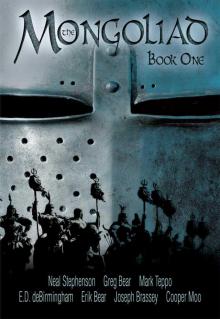 The Mongoliad: Book One
The Mongoliad: Book One Snow Crash
Snow Crash The Confusion: Volume Two of the Baroque Cycle
The Confusion: Volume Two of the Baroque Cycle The Rise and Fall of D.O.D.O.
The Rise and Fall of D.O.D.O. The Diamond Age: Or, a Young Lady's Illustrated Primer
The Diamond Age: Or, a Young Lady's Illustrated Primer The Big U
The Big U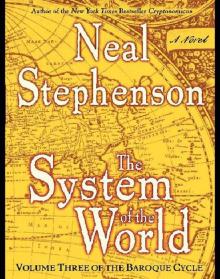 The System of the World: Volume Three of the Baroque Cycle
The System of the World: Volume Three of the Baroque Cycle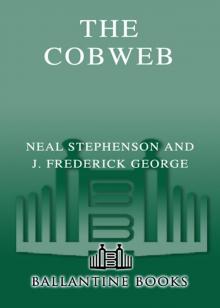 The Cobweb
The Cobweb Reamde
Reamde Fall; or, Dodge in Hell
Fall; or, Dodge in Hell Interface
Interface Quicksilver
Quicksilver The Mongoliad: Book Three
The Mongoliad: Book Three Seveneves
Seveneves Atmosphæra Incognita
Atmosphæra Incognita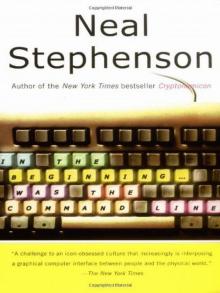 In the Beginning...Was the Command Line
In the Beginning...Was the Command Line Anathem
Anathem The Rise and Fall of D.O.D.O.: A Novel
The Rise and Fall of D.O.D.O.: A Novel The Mongoliad: Book Two
The Mongoliad: Book Two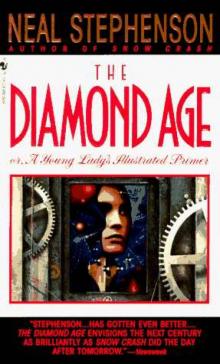 Diamond Age or a Young Lady's Illustrated Primer
Diamond Age or a Young Lady's Illustrated Primer THE System OF THE WORLD
THE System OF THE WORLD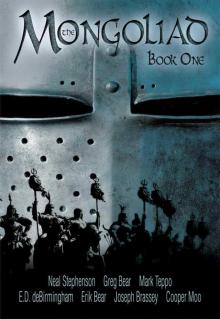 The Mongoliad: Book One tfs-1
The Mongoliad: Book One tfs-1 Some Remarks: Essays and Other Writing
Some Remarks: Essays and Other Writing Zodiac
Zodiac Spew
Spew The Baroque Cycle: Quicksilver, the Confusion, and the System of the World
The Baroque Cycle: Quicksilver, the Confusion, and the System of the World The Diamond Age
The Diamond Age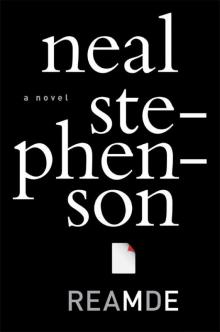 Reamde: A Novel
Reamde: A Novel In the Kingdom of Mao Bell
In the Kingdom of Mao Bell Mother Earth Mother Board
Mother Earth Mother Board Twelve Tomorrows - Visionary stories of the near future inspired by today's technologies
Twelve Tomorrows - Visionary stories of the near future inspired by today's technologies The Confusion
The Confusion The Great Simoleon Caper
The Great Simoleon Caper The Mongoliad: Book Three tfs-3
The Mongoliad: Book Three tfs-3